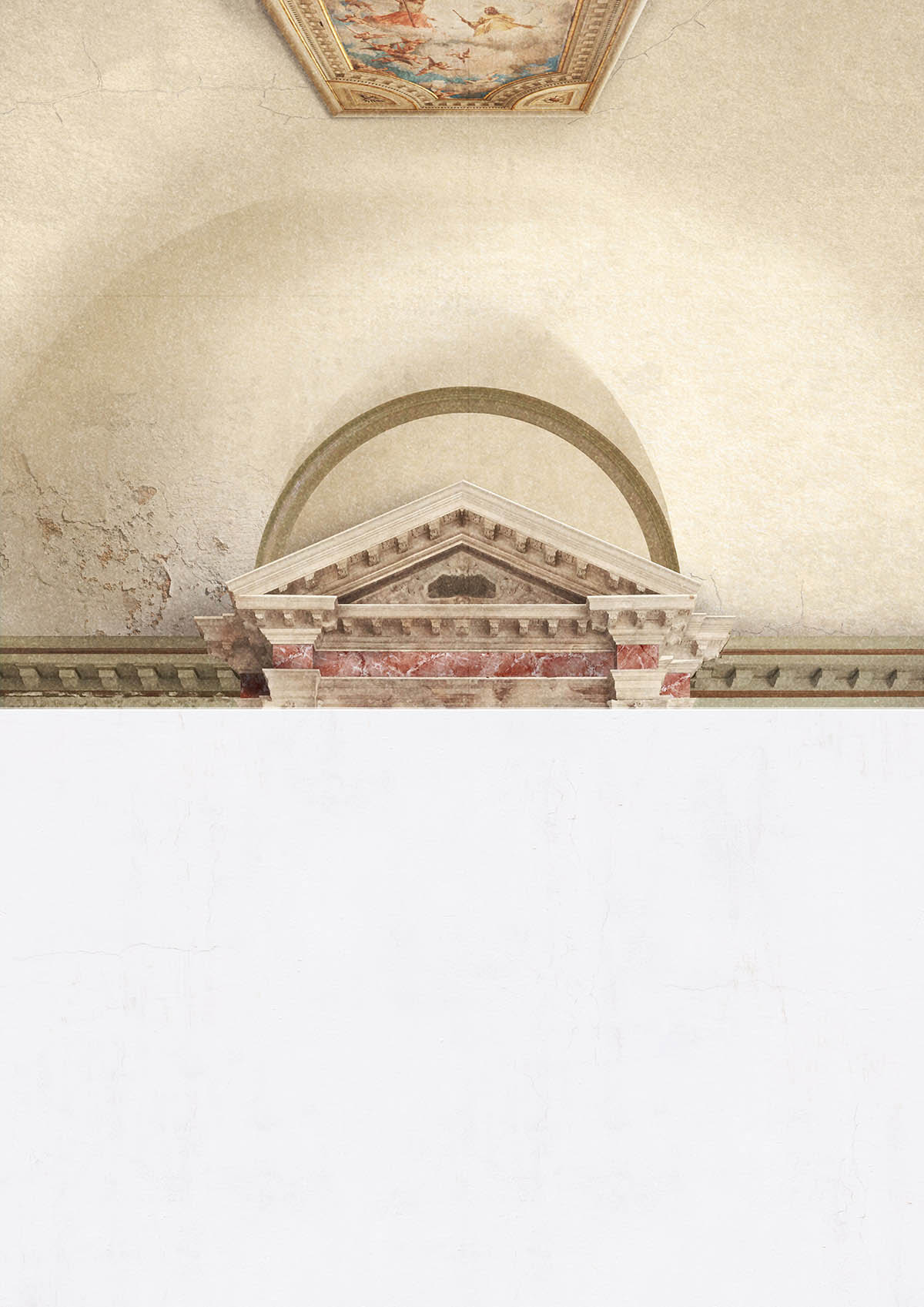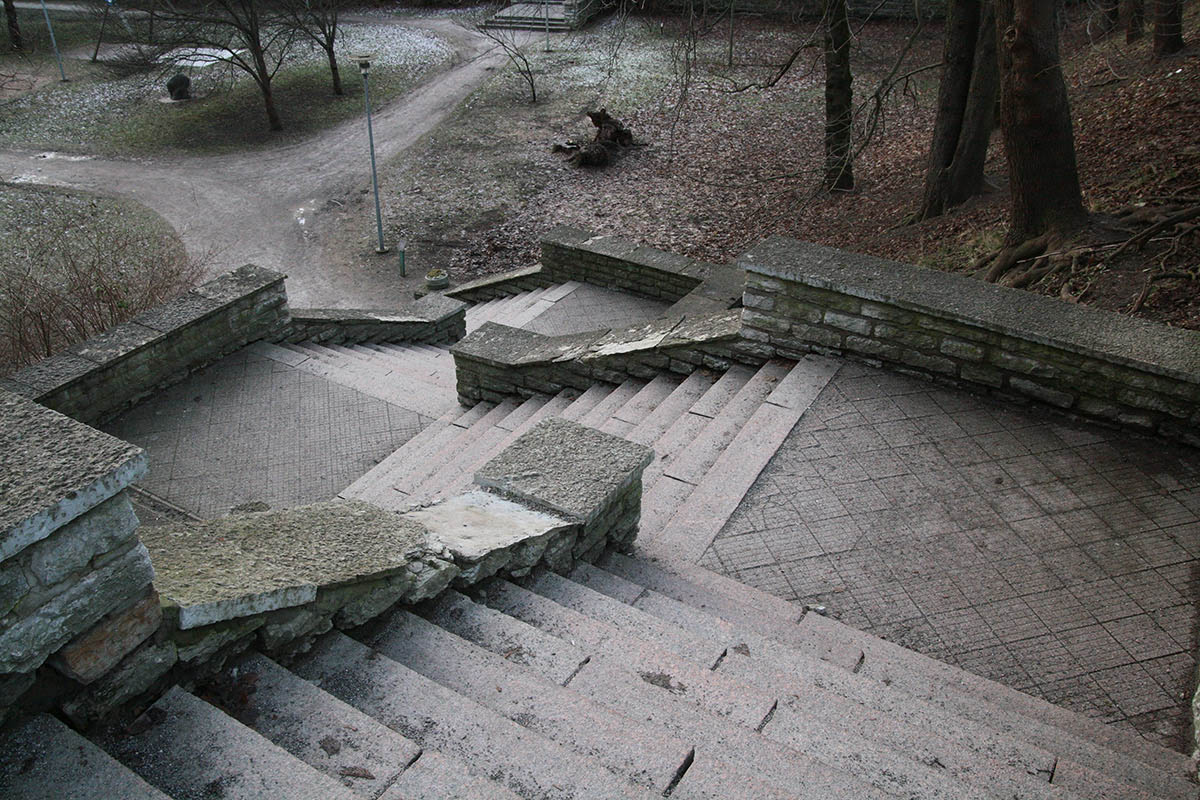Submitted by WA Contents
Estonia Pavilion to present Weak Monument in Venice Architecture Biennale
Estonia Architecture News - May 14, 2018 - 02:13 17324 views

The Estonian Centre of Architecture has unveiled design for the exhibition of "Weak Monument" in the Pavilion of Estonia, which will be presented at this year's Venice Architecture Biennale titled "Freespace".
The Venice Architecture Biennale kicks off on May 26, 2018 and will be on view until November 25, 2018 at the Giardini and the Arsenale. The 16th International Architecture Exhibition is curated by Irish architects Yvonne Farrell and Shelley McNamara.

Weak Monument wall altar
Estonian Pavilion curators, Laura Linsi, Roland Reemaa and Tadeáš Říha, explore the spectrum between the explicit representation of the monument and the implicit politics of everyday architectures: from the triumphal column to the pavement beneath it, through all that is inbetween.
The title itself – Weak Monument – is an oxymoron, a rhetorical device that offers fresh perspectives on how to recognize politics in any built form.

Weak Monument behind the wall
"Where does the monument stop and the pavement begin? Sometimes maintenance or neglect may overstep the boundary. Sometimes the difference is diminished by a protest, sometimes by a demolition," said curator Tadeáš Říha.
"Sometimes it is the history, the location or the material that blurs the exceptional and the everyday. In those moments that we present, something new occurs, not precisely aligned to how the monument is traditionally understood”, added Říha.

Weak Monument - Stairs at Hirvepark in Tallinn. Image © Roland Reemaa, 2018
Located at the edge of Via Garibaldi, between the Biennale venues of Giardini and Arsenale, the Pavilion of Estonia – Weak Monument will transform the rooms of the former baroque church of Santa Maria Ausiliatrice (Fondamenta San Gioacchin) that offer remnants of a monumental yet decadent spatial symmetry and hierarchy.
The Estonian Pavilion Opening Event will take place on Friday, 25 May 2018, from 18.00 at the presence of the Estonian Minister of Culture, Indrek Saar; the Director of the Estonian Centre of Architecture, Raul Järg; the Head of the Organising Commitee of Estonia 100, Jaanus Rohumaa; and the curators Laura Linsi, Roland Reemaa and Tadeáš Říha.

Weak Monument - Kalevipoeg in Torma Estonia. Image © Roland Reemaa, 2017
Weak Monument invites visitors to expand their understanding of how, where and why architecture can be recognized as political. The former church of Santa Maria Ausiliatrice is overtaken by a pavement and a wall. A suburban interlocking pavement covers its coloured marbles, while a monument-like concrete wall divides the exhibition space in two. The everyday and the exceptional structures are forced to occupy the same baroque interior. A scene is formed, which invites the visitor to step onto, and through it.

Weak Monument location
The concrete wall, which initially appears grand and impenetrable, can be crossed. Behind it, its internal structure and richness of materials unfold. In this transitional space, a broad collection of weak monuments is unveiled. Estonian, as well as European examples, are showcased through existing and newly commissioned photographs, through drawings and models, and in the catalogue.

Weak Monument site
"Weak Monument examines architecture’s capacity to be political, by juxtaposing two antithetical notions – weakness and monumentality," read the curatorial statement.
"Monuments reside on the margin of the architectural discipline while directly embodying some of its most central qualities, such as relation to the site, delimitation of public space and capacity for representation. Monuments represent power explicitly, but not universally."

Weak Monument wall altar
"In Estonia, the notion of monument appears as a foreign intruder. Its presence is marginal, its tradition nonexistent and its form tormented by an apparent cultural displacement. Underscaled, skewed and displanted, half demolished and neglected, monuments stand in their oblivious surroundings as uncanny souvenirs brought from distant lands. The Estonian cultural specificity has been increasingly accordant with a wider contemporary distrust of the monument as a device of oppressive authority."
"Weakness is at once a reflection and a proposition. It is full of contradictions, multiplicity and concealed meanings. In other words, everything that the classical concept of monument is not. It introduces strictly non-hierarchical structures, where politics is only implicit. It can be the pavement beneath the monument, the scaffold that allows for climbing the previously unclimbable; it can be the gap made explicit or the ruin that inspires the imagination," concluded in a statement.

Weak Monument section
In parallel to the exhibition, a book, entitled “Weak Monument – Architectures Beyond The Plinth” edited by the pavilion curators, has been published by Park Books, featuring guest essays by Tom Avermaete, Eik Hermann, Margrethe Troensegaard, Toomas Paaver and Klaus Platzgummer.
In keeping with the Weak Monument working method, it presents an eclectic collection of architecture in paintings and personal snapshots, drawings and film stills, from known European archives and from small Estonian museums. Although far from traditional architectural practice, all the examples are presented as architectural projects. The publication includes five potent chapters: The Ruin, The Gap, The Scaffold, The Base and The Shelter – challenging readers to reconsider the importance and potential of seemingly unnoticed architectural forms within our public spaces.

Project facts
Exhibition: Weak Monument
Location: former church of Santa Maria Ausiliatrice
Address: Fondamenta San Gioacchin (East edge of Via Garibaldi)
Curators: Laura Linsi, Roland Reemaa, Tadeáš Říha
Commissioner: Raul Järg (Estonian Centre of Architecture)
Production: Eve Arpo, Maria Kristiin Peterson (Estonian Centre of Architecture)
Collaborators: Tom Avermaete, Pavel Bouše, Charlotte Grace, Eik Hermann, Sandra Mälk, Toomas Paaver, Klaus Platzgummer, Margrethe Troensegaard
All images courtesy of Weak Monument, unless otherwise stated
> via Weak Monument
